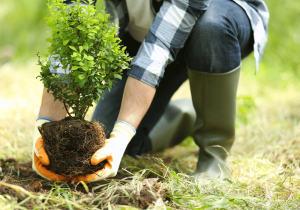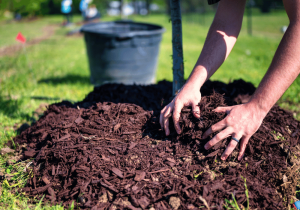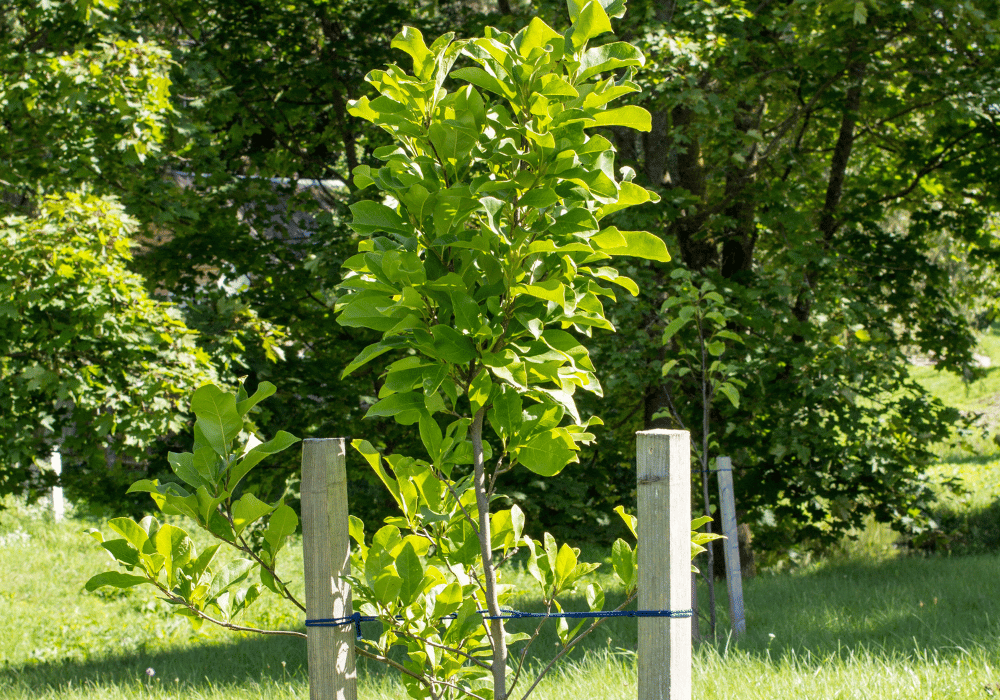Planting a tree is more than just digging a hole and setting a sapling into the ground. Young trees require thoughtful care and attention during their early years to ensure they grow into strong, healthy additions to your landscape. Without proper care, a young tree’s growth can be stunted, or worse, it may not survive at all. This blog will guide you through every step of young tree care, from planting to pruning, with practical advice and actionable tips to give your trees the best possible start. Whether you’re a homeowner, gardener, or simply a tree enthusiast, these tips will empower you to nurture young trees for a lifetime of health and beauty.
Planting Your Young Tree Correctly
The foundation of good tree care starts with planting it correctly. A poorly planted tree will struggle to thrive no matter how much care it receives afterward.
 Choosing the Right Location
Choosing the Right Location
Before you plant, make sure you select the optimal location for your tree. Consider these factors:
- Sunlight: Most young trees need abundant sunlight to grow. Observe how much sun the location receives throughout the day.
- Space: Ensure your tree will have enough room to mature without being crowded by structures, other trees, or power lines.
- Drainage: Avoid areas prone to water pooling, as poor drainage can suffocate roots.
- Compatibility: Consider the tree species and whether it will thrive in your soil type and climate. Native species are often the best choice.
Proper Planting Depth and Technique
How you plant your young tree will directly impact its ability to establish strong roots. Follow these guidelines:
- Planting Depth: The tree’s root flare (where the roots spread at the base of the trunk) should sit at or just above ground level. Burying the trunk too deeply can suffocate the tree.
- Digging the Hole: Dig a hole twice as wide as the root ball but not deeper than its height. This gives roots the room to grow outward.
- Backfill Properly: Use the soil you removed while digging, rather than adding fertilizers or foreign soil, to avoid creating an imbalance for the roots. Press gently to eliminate air pockets while avoiding compacting the soil too much.
Watering and Irrigation for Young Trees
Watering is one of the most critical aspects of young tree care—but getting it right is a delicate balance.
Establishing a Watering Schedule
- Initial Phase (First Year): Water your young tree deeply and consistently during the first year, especially in its first few months. Generally, one to two inches of water per week is ideal.
- Seasonal Changes: Adjust your schedule according to the season. Trees need more water during hot summer months and less in cooler seasons.
- Method: Use a slow, deep watering method, such as a soaker hose or watering bag, to encourage roots to grow deeply.
Recognizing Signs of Over or Underwatering
- Overwatering: Symptoms include yellowing leaves, wilting despite wet soil, and a rotten smell near the base of the tree.
- Underwatering: Look for curling, drooping, or dry, crispy leaves, and dry soil around the roots.
Keep an eye on soil moisture by checking it with your fingers or a soil moisture meter to ensure you’re hitting the perfect balance.
Mulching for Moisture Retention and Weed Control
Mulching is a simple yet impactful way to protect your young trees and improve their growing conditions.
 Selecting the Right Mulch
Selecting the Right Mulch
Opt for organic mulch, such as bark chips, shredded wood, or straw. These materials decompose over time, adding nutrients to the soil. Avoid applying rubber or dyed mulch, as these materials don’t contribute to soil health and can even trap heat.
Mulch Application Best Practices
- Layer Thickness: Apply a mulch layer 2–4 inches thick around the base of the tree. Avoid adding too much mulch, as it can create moisture-related problems.
- Keep Away from the Trunk: Leave a gap of 2–3 inches between the mulch and the tree trunk to prevent rot, pests, and diseases.
- Extend Coverage: Spread the mulch in a wide circle around the tree to insulate roots and inhibit weed growth.
Protecting Young Trees from Pests and Diseases
Young trees are highly vulnerable to pests and diseases, and preventive measures are essential to their survival.
Identifying Common Threats
- Pests: Look out for signs of aphids, caterpillars, and beetles, which can damage leaves and bark.
- Diseases: Common threats include fungal infections like root rot, powdery mildew, or cankers. Inspect leaves and bark regularly for discoloration, spots, or other abnormalities.
Preventative Measures and Treatments
- Tree Guards: Protect the trunk from pests like deer or rabbits by installing tree guards or wraps.
- Pruning: Prune damaged or diseased branches promptly to prevent the spread of infection.
- Neem Oil or Organic Sprays: Apply these treatments to control pests without harming beneficial insects.
- Proper Spacing: Plant trees with enough space between them to allow good airflow, reducing disease risk.
Pruning Young Trees for Optimal Growth
Pruning isn’t just about shaping a tree; it’s essential for its health and structural integrity.
Understanding Pruning Principles
Pruning young trees helps remove weak or damaged branches while stimulating proper limb growth. Follow these principles:
- Prune in late winter or early spring when the tree is dormant, before new growth begins.
- Focus on maintaining a single strong central leader (main trunk).
- Avoid removing more than 25% of the tree’s canopy in a single pruning session.
Pruning Techniques for Young Trees
- Remove Crossing Branches: Eliminate branches that cross or rub against each other to prevent wounds.
- Trim Suckers and Watersprouts: Remove unnecessary growth near the base (suckers) or thin vertical shoots (watersprouts) that sap energy from the tree.
- Cut Cleanly: Use sharp pruning tools and make clean cuts just outside the branch collar. Avoid leaving stubs to reduce the risk of disease.
Caring for young trees requires time, effort, and commitment, but the payoff is worth it. By planting properly, watering effectively, using mulch, protecting from pests, and pruning strategically, you can give your young trees the best foundation for a healthy, vibrant life. Trees are a legacy. With proper care in their early years, they can thrive for decades, enhancing your outdoor space and benefiting the environment. For expert advice and additional resources, consult a local arborist or horticulture specialist. Start cultivating a greener tomorrow by giving your young trees the care they need today!

